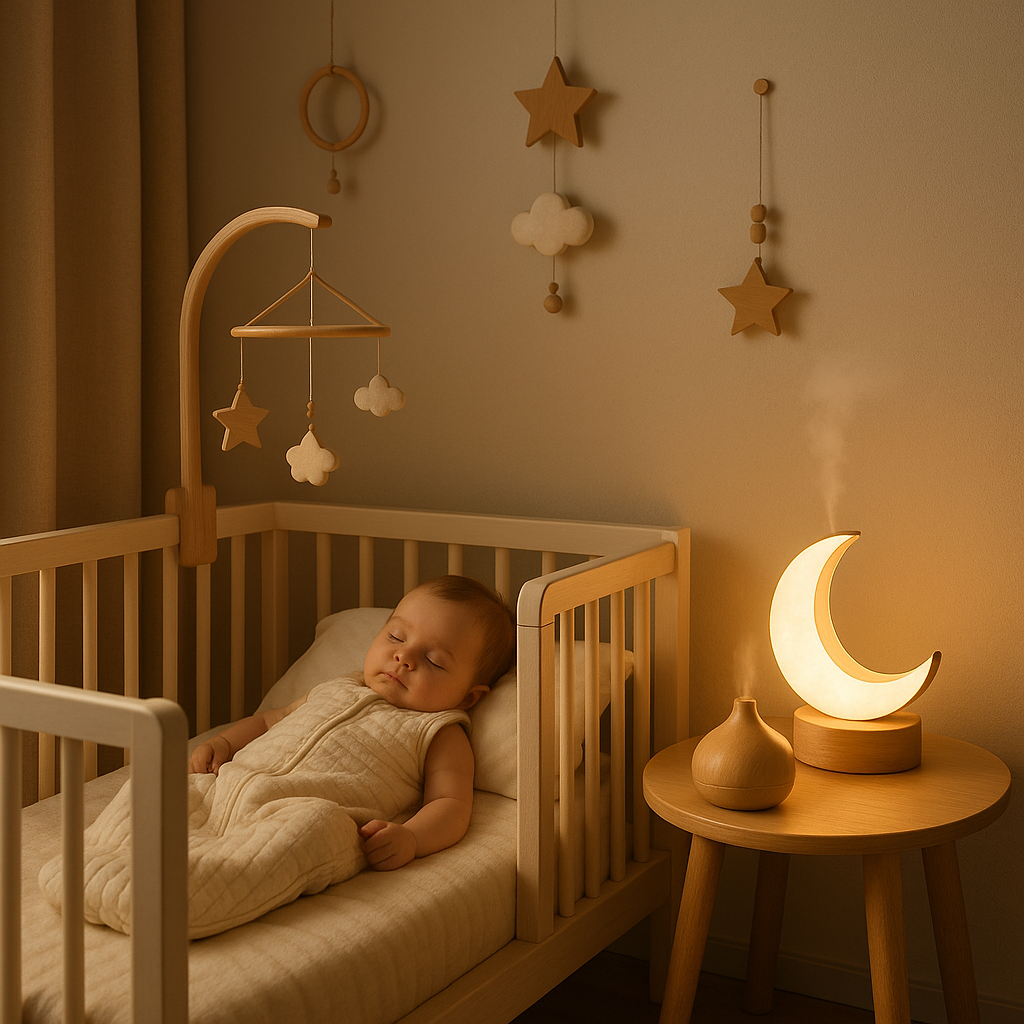
Sleep is Medicine: Design Guide for the Optimal Sleep Environment for Babies
Hello, this is Oobibaby. Last week, we discussed the importance of emotional well-being for mothers. This week, we turn our attention to the foundational element of a baby's health and development: sleep.
A baby’s sleep is often fragmented, leading to exhaustion for the whole family. The key to encouraging longer, more restful sleep lies not just in routines, but in creating an optimal, soothing sleep environment—a true sanctuary that embodies our Natural Comfort philosophy.
1. The 'Scandi' Sensory Trio: Sight, Sound, and Scent
The ideal sleep environment minimizes stimulation while maximizing comfort. Oobibaby follows the 'Scandi' approach: keeping things simple, natural, and calm.
-
Sight (Visual Calm): A dedicated sleep space should be free of bright colors and clutter. Use neutral, muted tones (off-white, soft gray, wood tones) on walls and bedding. A simple wooden mobile with clean lines is preferable to a bright, noisy toy. This minimalist aesthetic helps the baby's brain wind down.
-
Sound (White Noise/Silence): A quiet, consistent environment is essential. Using a white noise machine can mask sudden household sounds.
-
Scent (Subtle Relaxation): Introduce a gentle, consistent scent (like lavender or chamomile) using a natural essential oil diffuser during the pre-sleep routine. The scent acts as a powerful cue that signals "it's time to rest."
2. Texture and Temperature: The Comfort of Natural Textiles
The actual surface the baby sleeps on contributes greatly to sleep quality. Overheating or skin irritation can quickly disrupt rest.
-
Breathable Textiles: Choose bedding, sleep sacks, and swaddles made from 100% Organic Cotton. Its natural, highly breathable fibers help regulate the baby's temperature, preventing overheating and minimizing skin sensitivity, which is crucial for deep sleep.
-
Layering for Comfort: Instead of heavy, single blankets, adopt a simple layering system (e.g., a fitted sheet, a light blanket, and a sleep sack). This allows parents to easily adjust the baby's warmth without disturbing them.
3. The Crucial Role of Lighting (The Nighttime Cue)
Lighting is the primary tool for communicating day versus night to a baby.
-
Blackout During Sleep: During naptime and nighttime, ensure the room is truly dark using blackout curtains or shades to encourage melatonin production.
-
The Soft Glow of the Nightlight: For nighttime checks or feedings, avoid flipping on a bright overhead light. Use a soft, dim nightlight with a warm amber or red glow. This gentle light provides visibility for the parents without disrupting the baby's sleep cycle or shocking their eyes. A stylish wooden or minimalist desk lamp with a low-wattage bulb is the perfect 'Scandi' solution.
By prioritizing these elements—simplicity, natural comfort, and smart cues—you can transform your baby's room into the optimal sleep sanctuary. Remember, a well-rested baby equals a happier family!
Join us next week for Blog 3, where we dive into: "Developmental Expert? A Guide to Designing Your Child's 'Self-Exploration Play Environment'."
